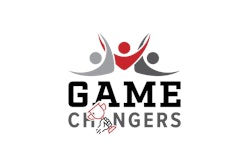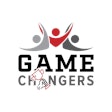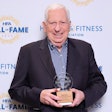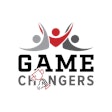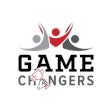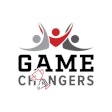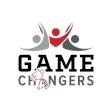
March is Women’s History Month, and to celebrate, leading female architects in sports and recreation shared their thoughts on women’s role in the industry, trends in facility design that pertain exclusively to women and what Women’s History Month means to them.
1. How has your experience as a former athlete shaped the way you approach sports/rec projects now?
 Emily Parris, Sasaki
Emily Parris, Sasaki
Emily Parris: The opportunity to play basketball in college has given me valuable insights into the user experience of today’s student-athletes. I prioritize design details and adjacencies that enhance the daily experience of users in all the sports projects I undertake. My goal is to create thoughtful and inviting performance environments that support individuals in their pursuit of personal excellence. Growing up involved in sports, I was a quiet kid, but athletics helped me make friends and taught me how to collaborate, celebrate and recover as a team. The skills I acquired in that fun and playful environment have directly influenced the way I work with my teammates and clients today.
Hannah Evwaraye: As a former student-athlete and Bowling Green State University women’s golf team member, I understand firsthand the impact that well-designed sports and recreation spaces have on athletes. Competing at the collegiate level taught me the importance of spaces that support not just an athlete’s performance, but also development and team dynamics. That perspective now informs my work as an architect—ensuring that every facility I help design is functional and inspiring for the athletes and communities who use them.
Athletics also instilled a team-oriented mindset, which directly translates into how we collaborate with clients, teams, and builders. Just like in sports, success in architecture requires trust, strategy and a shared vision.
2. Are there any emerging trends in facility design that are the direct result of women's engagement and participation in sport?
 Jennifer Rittler, Moody Nolan
Jennifer Rittler, Moody Nolan
Jennifer Rittler: Emerging trends aren’t just influencing design—they’re demanding a fundamental shift in how we think about sports and recreation spaces. Experience-driven spaces, elevated amenities, brand-integrated environments and athlete-centric design are creating environments that reinforce identity, confidence, and long-term success.
Cassandra Bukowski: One of the most significant changes in recent years is the development of dedicated training facilities for women. Within these facilities, new design trends are emerging to better support female athletes. These trends include creating more family-friendly environments, as well as areas specifically designed to support athletes who are mothers.
Another exciting trend is the increased focus on research tailored to women. High-tech training spaces are being developed to gather biometric data, which is crucial for understanding the unique aspects of women's bodies. This data helps in designing training programs that align with women's physiological cycles and areas of strength, offering a more personalized and effective approach to training.
3. What are changes in the industry you'd love to see to encourage women's involvement?
EP: Architecture has historically been a male-dominated profession, but we are now seeing an increase in women's representation, particularly at the entry level. This change is truly exciting and comes with the shared responsibility of our leaders to mentor and create opportunities for women to thrive in the field. We should focus on teaching our professionals how to effectively mentor, support, and advocate for younger staff. This is important but can be quite challenging. Personally, I have benefited from exceptional mentors who encouraged me to pursue licensure, built diverse teams, and provided opportunities that both challenged me and helped grow my confidence. I aspire to become the kind of leader I have had the privilege to work with.

CB: In my opinion, the architecture and construction industries are making substantial progress in encouraging women’s involvement. As we progress, I believe that the most crucial aspects that must be maintained in the industry are the implementation of robust maternity leave policies, the provision of support for mothers upon their return to work with appropriate mother’s rooms and break time, and the continued adoption of flexible work policies that prioritize the well-being of families while ensuring the appropriate fulfillment of client and project team obligations.
JR: If we want more women involved, we need more women leading. Currently, only 27% of licensed architects in the U.S. are women, and Black women make up less than 0.5%. But the profession is diversifying—fast. Newly licensed architects are 43% women, which means the future is shifting.
Sports is proving what happens when women have the opportunity to lead. They’re stepping into ownership roles, driving investment and transforming the business of sports, like Serena Williams joining the ownership group of the WNBA’s Toronto Tempo. Architecture needs that same momentum. That means intentional support, mentorship and making sure emerging professionals don’t just enter the field but thrive in it. This isn’t just about diversity. It’s about ensuring the next generation of architects sees a profession that reflects them—and one that’s stronger because of it.
4. Is there a moment or memory that stands out when you had the chance to collaborate with a female colleague on a project that made an impact?
CB: One of my favorite things about working at Moody Nolan is that our practice has a very even split of men and women, so I'm fortunate to work alongside women every day. About 10 years ago I had a chance to work with Julie Cook from our office on Wintrust Arena - she was the senior project architect, and I was the project architect over the bowl and interior architecture. This was the first time I had worked directly for another woman, and it was impactful to see how she ran projects compared to my previous project teams. It gave me a different perspective and has encouraged me to take the best parts from anyone in leadership and use them in my own leadership style.

HE: One of my first projects in architecture was led by a female architect, and looking back, I realize how important that experience was in shaping the foundation of my career. As a young intern entering the profession, having a strong female leader to learn from provided not only technical knowledge but also a sense of possibility and belonging in the field. That experience reinforced the value of mentorship, and I strive to pay it forward by empowering and guiding younger female architects and designers—not just through mentorship but by setting an example of leadership and impact.
5. What does Women's History Month mean to you?
EP: Women’s History Month is a wonderful time to take a moment to reflect and support each other. Advocacy plays a key role in our growth and teamwork, and our clients are at the heart of this mission. Look for people whose careers inspire you and learn from their experiences, while also sharing your own skills and insights. Find joy in the work you do, and you’ll inspire others to get involved and make a difference too.
CB: To me, Women’s History Month is a time to honor the invaluable contributions made by women. It also serves as a reminder that men and women complement each other, recognizing that our unique strengths and weaknesses work together to create a flourishing society. This is not to diminish one or the other but to celebrate and support what we all bring to the table.
JR: Women’s History Month isn’t just about looking back—it’s about recognizing the history we’re making right now. Hannah Evwaraye and I were the first back-to-back women presidents of the American Institute of Architects (AIA) Columbus in its history. That’s not just a milestone—it’s a shift. We’re making waves in our community, proving that leadership in architecture isn’t just evolving; it’s expanding. Seeing ourselves become part of history is both humbling and powerful. It’s a reminder that change happens when we show up, when we lead and when we make space for others to follow. I’m honored to be part of that movement.




















